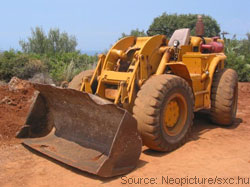
When building a home, your newly purchased property will become a construction zone. Before you can begin building, you must prepare the site for construction. The process involves several steps, which may require the assistance of a contractor or other professionals depending on your level of expertise.
Soil Testing
Before even purchasing the land, you should have the soil tested by a soil specialist to determine if it is suitable for construction. The following should be considered:
- Is the soil suitable for establishing and maintaining lawns, shrubs, trees, and gardens without modifications?
- Are there flood hazards?
- Do any soil factors prevent or limit septic tank absorption fields or sewage lagoons?
- What are the erosion conditions?
- How deep is the slope surrounding your site?
There are nine soil factors to keep in mind when testing the site for construction suitability. They are:
- surface texture: the soil's amount of sand, silt and clay
- permeability: how easily water passes through the soil
- depth of soil to bedrock
- slope: the steepness and length of the slope
- erosion hazard: potential for erosion due to the amount and depth of top soil and conditions of the site
- surface runoff: how easily water runs off of the site due to slope and other factors
- shrink-swell of the soil: the changes in soil volume based on moisture
- water table: the depth of water occurring seasonally and/or permanently
- flood hazards: how often water runoff fills the site
Rough-staking
This is where you begin designing the site plans and staking out the area for construction. You will decide where exactly you are building the house to:
- Obtain the necessary permits for construction
- Determine what trees and vegetation will need to be removed
- Determine how and where the earth will need to graded
- Determine how the home or addition will be connected to existing power lines, septic or sewage systems
Proper advance planning will prevent unnecessary costs, wasted time and other problems that could be easily avoided.
Clearing the site
Clear all trees, vegetation, and roots from your planned building site. Clearing only the necessary area (as designated in the rough-staking phase) will prevent you from spending extra money on trees that didn't need to be removed. Clearing away too much vegetation can also contribute to the erosion of the property.
Once you have cleared the site, you will have to dispose of the debris. You can:
- Pay to have it hauled away
- Contact the fire department to inquire about burning it
- Bury it if you live in a rural area (be sure it is far enough away from your home, or it could cause surface depression, drainage problems, or become an eyesore)
Excavating
If your home will have a basement, you will have to excavate, or dig out, the site. This is done with a bulldozer, and should be performed by an experienced individual. You will need someone who knows how to operate a transit to determine the appropriate depth to excavate.
Just like the vegetation, you will need to dispose of the excess dirt. You may be able to use it to "fill" other areas of your property and avoid paying for a hauling service.
Grading the site
Site grading is the process of adjusting the slope and elevation of the soil to make it flat and prepare it for laying the concrete foundation of your home. You may be able to use any dirt you dug to fill other areas and make the site level.
Bulldozers are used to remove and redistribute the dirt to balance out the low and high areas of the site. Then grading machines level and tamp the soil for an even surface prepared for the foundation. Cranes and similar equipment may be necessary for the removal of large rocks or other difficult obstructions.